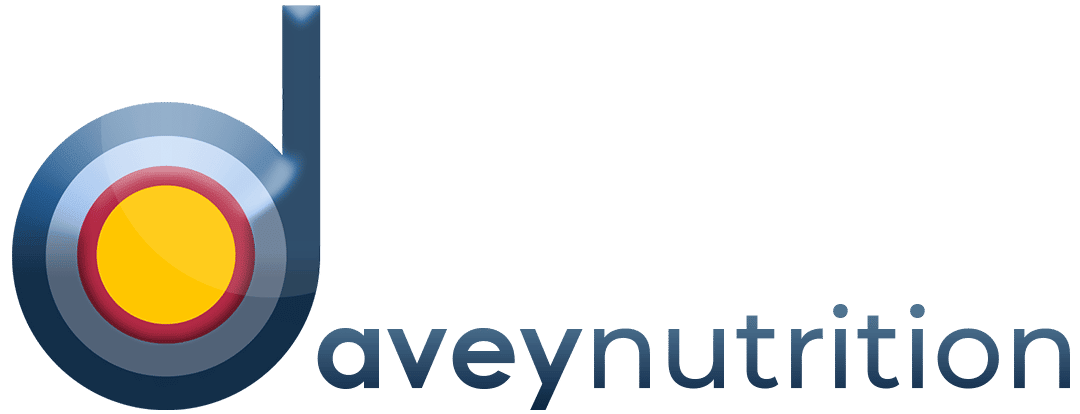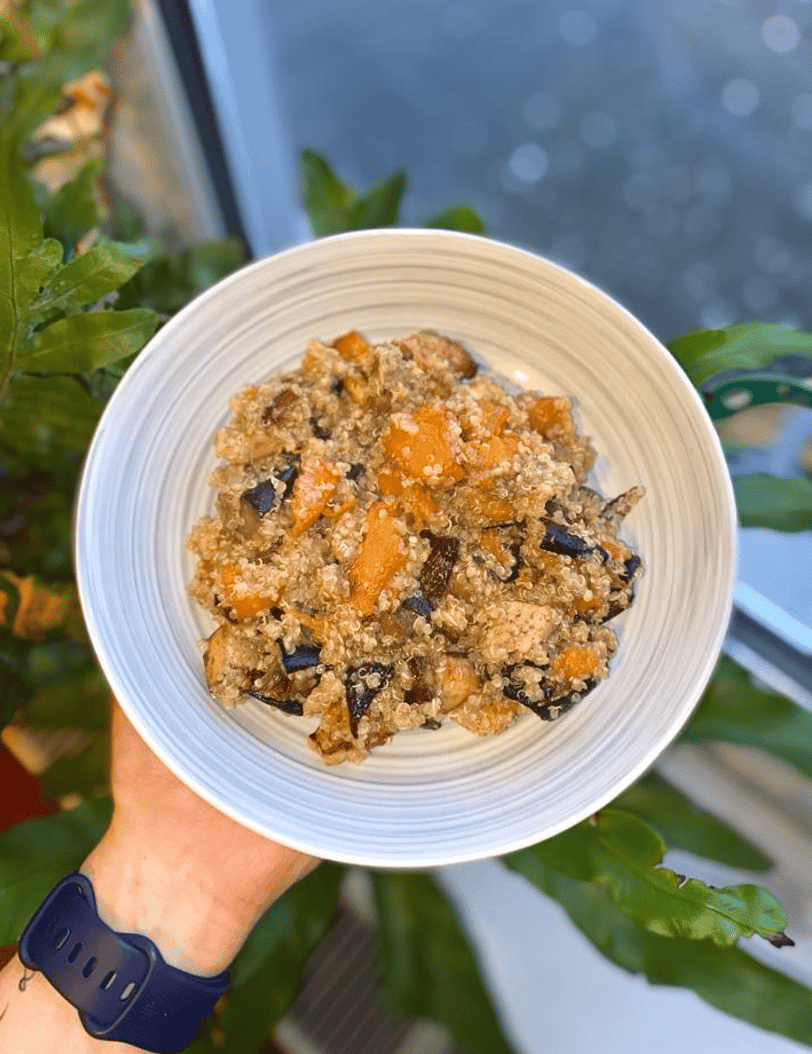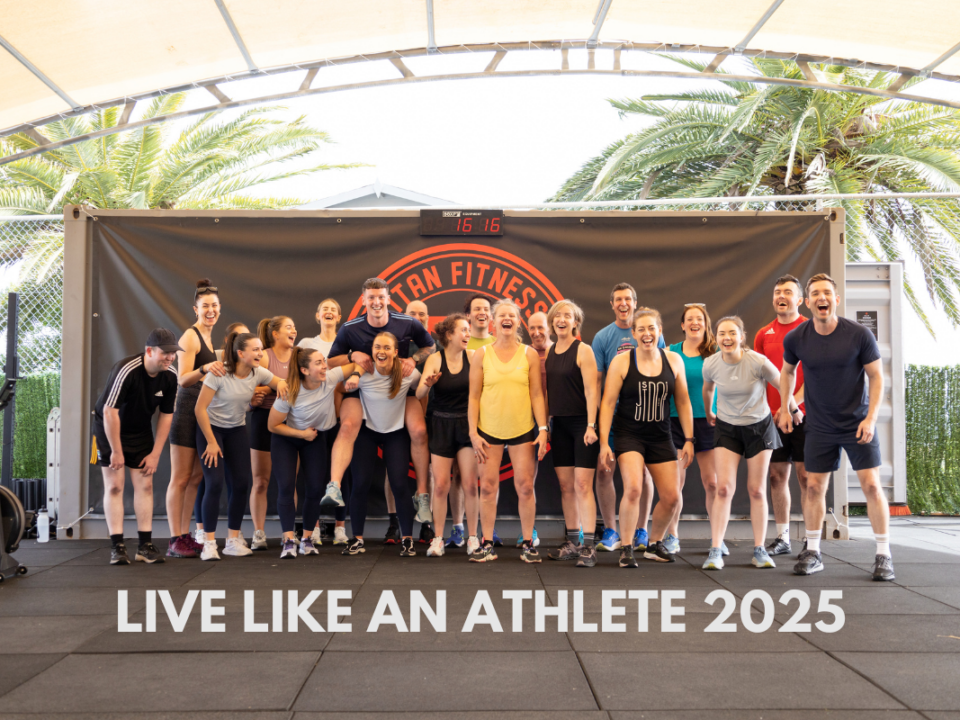Summary points
- In this article we discuss the key elements for building lean mass
- A balanced diet with sufficient calories and nutrients is essential for all performance related goals, including building muscle mass
- The timing of your meals is an important factor for ensuring your recovery and adaptation from each session is achieved
- Daily habits such as sleep and stress management play a huge role in muscle building and should not be underestimated

The key elements for building lean mass
The nutrition headlines that grab our attention often relate to quick fixes or short term solutions for our health or appearance. We keep hearing about new, faster and easier ways to achieve our health goals, whether they are to lose fat, gain muscle or ‘tone up’. The truth is, there’s no quick fix to achieving your health and your fitness goals – you need to accept that it requires effort, planning and consistency. Check out our article on goal setting for more information.
One of the fundamental differences between building lean mass and other performance goals is that a person aiming to build lean mass will require more energy and fluids to allow for the development of new muscle. Inadequate energy intakes can result in loss of muscle mass, increased risk of fatigue, injury, illness and prolonged recovery from training rather than allowing the body to grow and get stronger.
Key elements for building lean mass – nutrition considersations:
- Adequate calories to build new mass
- Hitting specific nutrient needs, carbohydrate, protein and healthy fats
- Nutrient timing, pre and post workout
- Adequate protein, appropriate quality and distribution of protein
- Consistent supplement intake, whey or creatine each day
- Sleep, adequate sleep allows for recovery and adaptation
- Stress management
- Active recovery strategies

What is anabolism and why is it important?
Anabolism/catabolism is the balance between synthesis and breakdown that occurs in living tissue. Anabolism (hypertrophy) results from initial breakdown processes (catabolism), which transitions to the growth of new tissue (anabolism) in the presence of sufficient energy and nutrients.
Put simply, the resistance exercise you complete as part of your progressive overload program (a program designed for an individual to increase the weight or the volume of work they do each week) creates a stimulus in the body to get stronger, the body gets stronger through this resistance training with ample recovery and appropriate nutrition.
The growth of muscle tissue is an intricate process that is dependent on muscle protein synthesis exceeding muscle protein breakdown. Muscle protein synthesis is a naturally occurring process in which protein is produced to repair muscle damage caused by intense resistance exercise. It has the opposite impact to muscle protein breakdown (MPB) in which protein is lost as a result of in activity, poor nutrition or stress. If MPS is greater than MPB, muscle growth is achieved. The degree of muscle growth induced by resistance exercise is strongly associated with protein synthesis exceeding muscle protein breakdown for a sustained period of time. Training and nutrition strategies that maximize anabolism and limit catabolism are essential for gaining lean muscle mass.

Energy intake
The target intake of calories is one of the key elements for building lean mass and it depends on a number of factors such as how much mass is a person aiming to gain, how long is the timeframe for gaining lean tissue and importantly;
- Is the target gain lean mass with minimal increases in fat mass?
- Is the target to increase lean mass as efficiently as possible?
For example, if someone is aiming to reduce their fat mass by >3kg in a 10 week period, then their intake of calories will need to be more significant = compared to someone who is aiming to gain 2kg over 12 weeks. The target for increasing lean mass slowly with minimal increase in fat mass is a conservative increase in calories versus someone looking to the most efficient increase in mass which is aggressive. It can be categorised as follows, 10% surplus (conservative), 15% surplus (moderate) and 20% surplus (significant).
Protein intake – one of the key elements for building lean mass
It is well established that protein is an essential component for building muscle mass, particularly in the pre and post-exercise period. What about carbohydrate foods, what is the role of carbohydrates in building muscle mass? Considering that on one hand carbohydrate is such a critical element of an athlete’s diet for athletic performance and on the other hand the large amount of information you hear or read online about lower carbohydrate diets being appropriate for reducing body fat and improving general health! Is it any wonder people are confused about how to approach their nutrition goals?
A question that is often asked is, how important is carbohydrate (CHO) intake for building muscle mass (hypertrophy) and can it be achieved without them?

What about the ability to build muscle mass in a calorie deficit?
That is a question often asked by athletes and those aiming to increase muscle mass. The short answer to that question is yes, in certain circumstances but not all situations! We don’t have the scope to cover that topic in this article but briefly, a landmark study in 2016 lead by the researcher Thomas Longland showed that ‘higher compared with lower dietary protein during an energy deficit combined with intense exercise promotes greater lean mass gain and fat mass loss’. It must be pointed out that the participants in the study were not ‘regularly performing resistance exercise nor were they regularly performing structured progressive aerobic or anaerobic training’. This means that they had greater potential to build muscle mass compared to those who have a significant training age or experience of resistance training. This is another reason why it’s important to consider all factors of a research study and not just the key findings.
A key role for carbohydrate and insulin in building lean mass
When CHO is consumed the body releases a hormone called insulin to facilitate the uptake of CHO in the digested form (glucose) into the body’s cells. Although the primary function of insulin is carefully regulating CHO metabolism, significantly, it also plays an important role in muscle development by aiding muscle protein synthesis and preventing the breakdown of muscle tissue. It also plays a key role in helping to shuttle amino acids and glucose into muscle cells. Without making this topic too complicated, when we exercise intensely we deplete our energy stores (primarily glycogen, the stored form of carbohydrate), if we want to facilitate rapid recovery we need to eat foods that contain carbohydrate and protein to replenish and repair. Insulin plays a key role in making sure the nutrients and building blocks from these foods are efficiently transported to the sites in the body where they are needed.
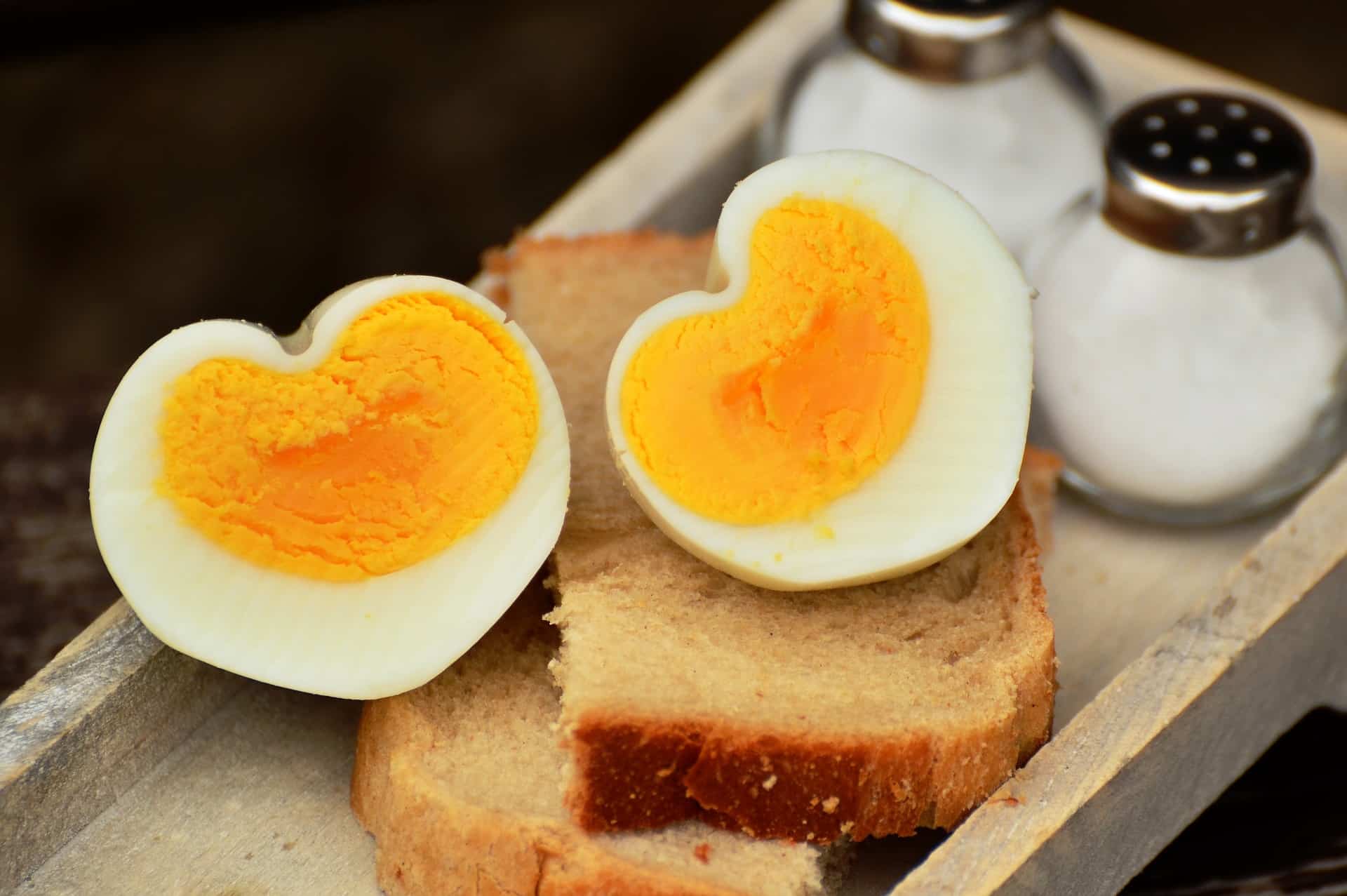
If you find that you are not gaining muscle mass, here are a list of potential reasons:
- You are not consuming sufficient calories and macronutrients
- You are not following an appropriate progressive overload resistance program
- You are completing too much aerobic based training
- You are overtraining and not allowing sufficient recovery between sessions
- You are not consistent with your training and nutrition
- Your timeframe to achieve your goal is unsustainable
An approach that leads to efficient muscle ‘gains’
Although research supports the concept of developing lean muscle mass without consuming significant amounts of CHO, with further investigation it is apparent that CHO, particularly fast digesting CHO can play a role in enhancing the physiological response to a training stimulus. The key is consuming CHO at appropriate intervals to allow for effective muscle growth with minimal deposition of body fat. A simple approach is to consume a daily intake of roughly 4 g of CHO per kg of body weight, with the greatest proportion of this intake being consumed in the immediate recovery phase. You will find meal plans in the meal plan section of the website that will help you achieve this goal.
Nutrient timing – key elements for building lean mass
During the post-exercise period (30-60 minute period post-exercise) it is essential to get the primary macronutrients (protein and CHO) into your body to refuel, promote recovery and adaptation. It is during the recovery phase that there is the greatest potential for muscle protein synthesis to occur.
This is also the time when the body uses CHO most efficiently as it is primarily used to restore depleted glycogen stores; in addition, there is also a greater level of muscle insulin sensitivity, which means nutrients are preferentially shuttled to and stored in the active muscle resulting in a lower probability that surplus energy will be stored as body fat.
The rationale for consuming fast-digesting CHO (white breads, pasta and rice, sugar, honey, juice etc.) with essential amino acids is further supported by the resulting insulin response which aids in the development of an anabolic state, reduces muscle breakdown and facilitates the replacement of energy stores.
A protein / carbohydrate meal or indeed a whey protein supplement, combined with a fast-digesting CHO such as simple sugars is a practical way of achieving optimal post-workout nutrition. Indeed, quality food sources are just as effective, for example fast-digesting whole-food CHO sources like pineapple, raisins, apricots and white rice combined with a protein source such as a medium sized portion of lean meat or 3 organic eggs will elicit a desirable recovery and adaptive response from an intense workout. Again lots of suitable recipes are available on the daveynutrition recipe page.

How much CHO and protein?
Research suggests that the ingestion of as little as 20 g of protein combined with 35 g of CHO at both 1 and 3 h post-exercise results in the creation of an anabolic environment in the body post-workout. The consumption of a protein food source or indeed protein powder (e.g. 25-30g whey, hemp, rice or egg) blended with some fruit or simple sugars may be preferable for some based on individual preference. A reminder that this is an excellent read for more information on protein intake; ‘protein, your questions answered’.
Breaking down the key elements to building lean mass
- Have a performance training plan that is personalised to your needs; use the daveynutrition performance calculator to make sure you have a clear understanding of your daily energy and nutrient needs.
- Follow a daveynutrition meal plan that matches your nutrient needs from the meal plan section.
- Eat a fast-digesting CHO source coupled with a quality source of protein post-workout (0.8 g of CHO per kg BM and 0.3 g of protein per kg BM). This amounts to at least 20 g of protein for most people.
- Consume at least 3 g CHO per kg BM daily, primarily before and after your exercise session
- Larger volumes of CHO (4-6g per kg BM) should be ingested if general physical activity or indeed training intensity and volume is notably high such as after interval sessions > 60 minutes.
- Consume at least 1.7-2.0 g of protein per kg BM daily.
- Consume adequate amounts of essential fats from avocados, fish, fish oils, walnuts, pecan nuts and flaxseed.
- Aim to create a calorie surplus of roughly 300-500 kcal on a daily basis from nutritious food sources.
- If you are meeting all your nutrition needs and following a well-structured training program, you could also consider creatine supplementation to support the development of muscle mass. For more details on creatine supplementation read our article here.
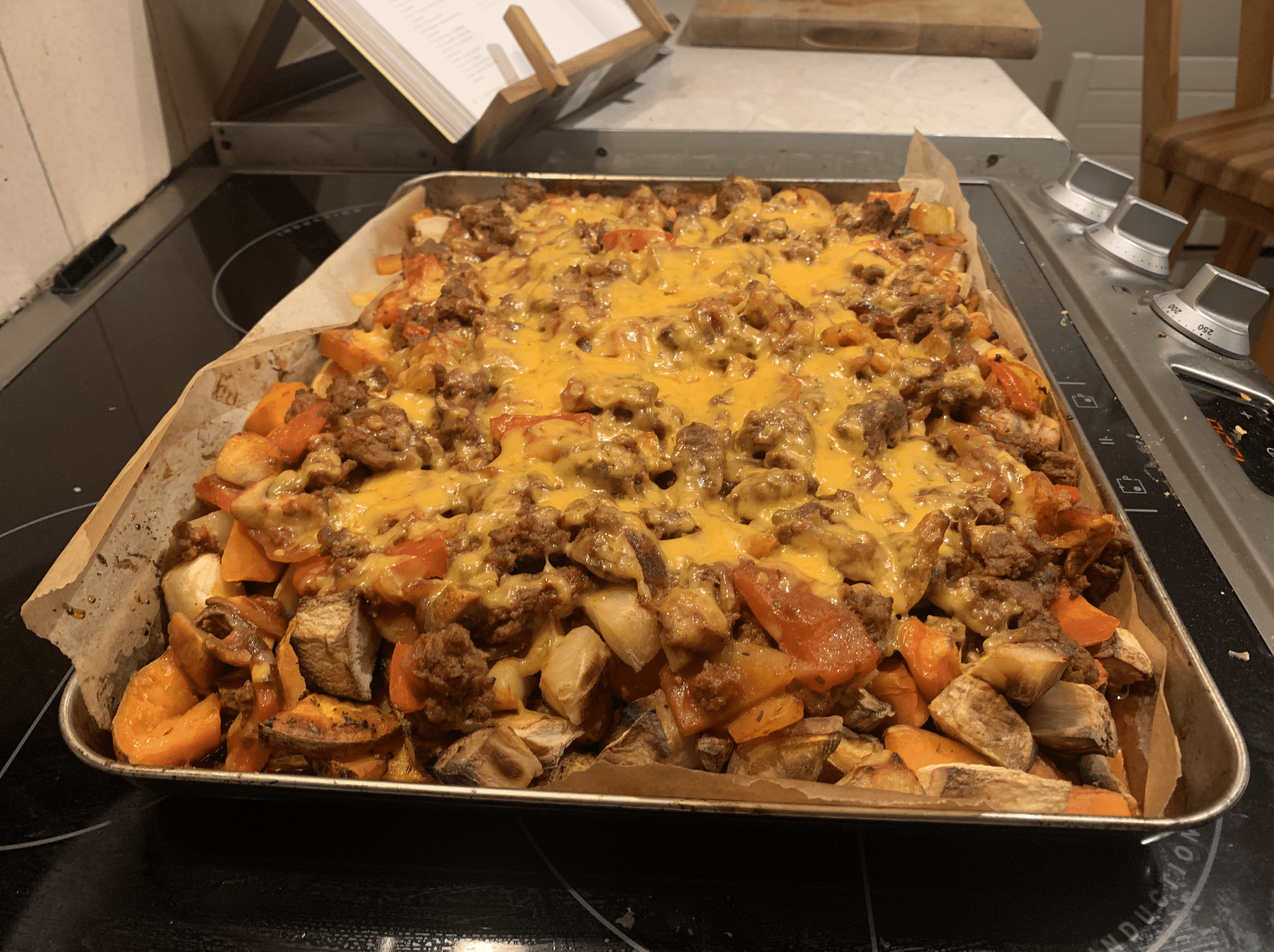
Check out our recent high protein recipes and meal plans that may suit your goal:
There are lots of other pre and post workout recipes you can use as part of your nutrition strategy for building muscle mass on the daveynutrition recipe page.
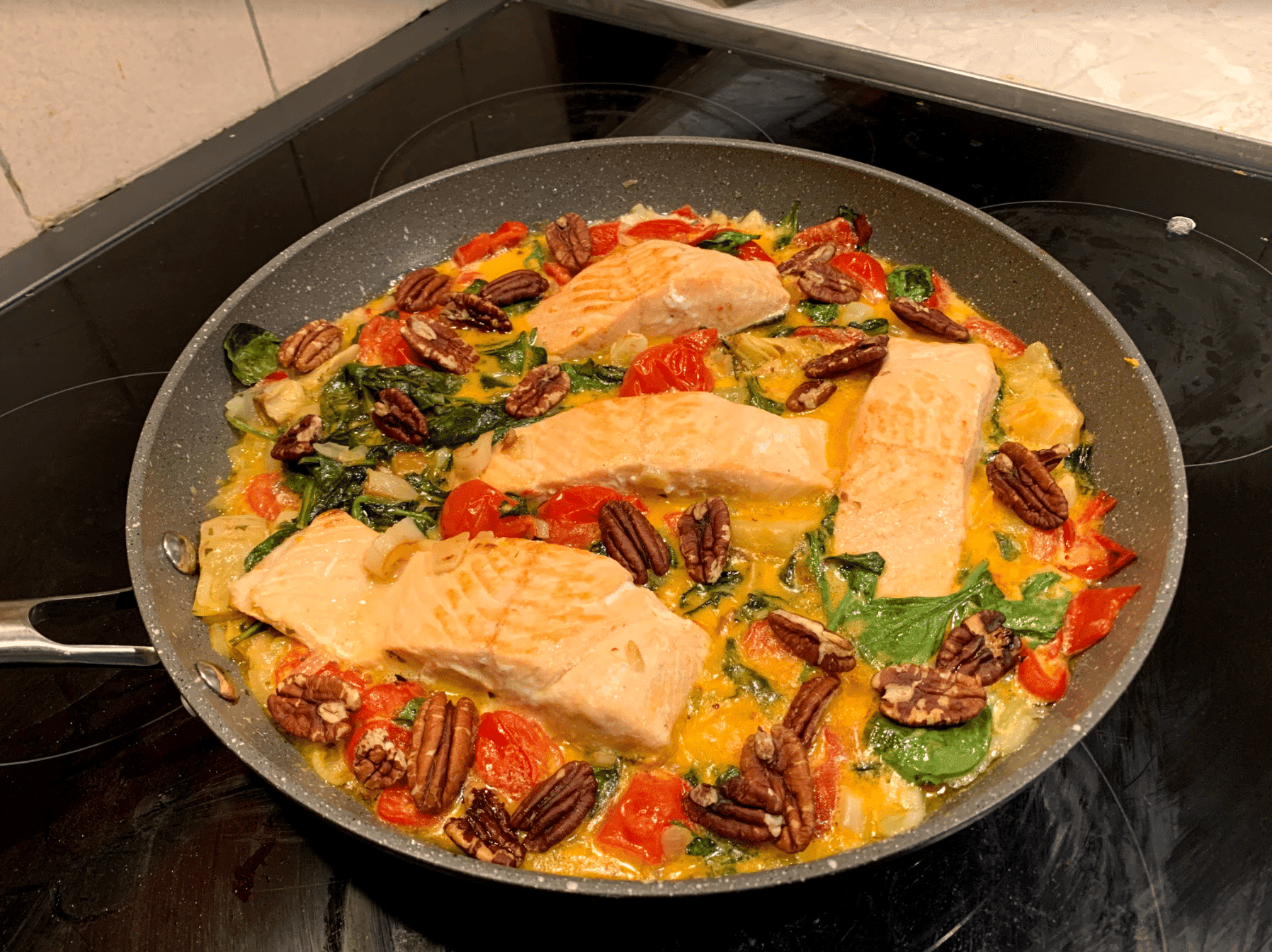
References
Astrup A. The satiating power of protein—a key to obesity prevention? Am J Clin Nutr 2005;82:1–2.
Biolo, G., Tipton, K.D., Klein, S., and Wolfe, R.R. 1997. An abundant supply of amino acids enhances the metabolic effect of exercise on muscle protein. Am. J. Physiol. 273: E122–E129.
Borsheim E, Aarsland A, Wolfe RR. Effect of an amino acid, protein, and carbohydrate mixture on net muscle protein balance after resistance exercise. Int J Sport Nutr Exerc Metab 14: 255–271, 2004.
Dupuy, O., Douzi, W., Theurot, D., Bosquet, L., and Dugué, B., 2018. An Evidence-Based Approach for Choosing Post-exercise Recovery Techniques to Reduce Markers of Muscle Damage, Soreness, Fatigue, and Inflammation: A Systematic Review With Meta-Analysis. Frontiers in physiology, 9 (403).
Fujita, S., Rasmussen, B.B., Cadenas, J.G., Grady, J.J., and Volpi, E., 2006. Effect of insulin on human skeletal muscle protein synthesis is modulated by insulin-induced changes in muscle blood flow and amino acid availability. Am. J. Physiol. Endocrinol. Metab. 291: E745–E754.
Longland, T.M., Oikawa, S.Y., Mitchell, C.J., Devries, M.C. and Phillips, S.M., 2016. Higher compared with lower dietary protein during an energy deficit combined with intense exercise promotes greater lean mass gain and fat mass loss: a randomized trial. The American journal of clinical nutrition, 103(3), pp.738-746.
Koopman R, Beelen M, Stellingwerff T, Pennings B, Saris WHM, Kies AK, Kuipers H, van Loon LJC. Coingestion of carbohydrate with protein does not further augment post-exercise muscle protein synthesis. Am J Physiol Endocrinol Metab 293: E833–E842, 2007.
Paddon-Jones D, Westman E, Mattes RD, Wolfe RR, Astrup A, Westerterp-Plantenga M. Protein, weight management, and satiety. American Journal Clinical Nutrition May;87(5) 2008.
Poole, C. Wilborn, C. Taylor, L. & Kerksick, C. The role of post-exercise nutrient administration on muscle protein synthesis and glycogen synthesis. Journal of Sports Science and Medicine, 9, 354-363, 2010.
Potgeieter, S., 2013. Sport nutition: A review of the latest guidelines for exercise and sport nutrition from the American College of Sport Nutrition, the International Olympic Committee and the International Society for Sports Nutrition. South African Journal of Clinical Nutrition, 26(1).
Miller SL, Tipton KD, Chinkes DL, Wolf SE, Wolfe RR. Independent and combined effects of amino acids and glucose after resistance exercise. Med Sci Sports Exerc 35: 449–455, 2003.
Sharp & David R. Pearson Amino acid supplements and recovery from high-intensity resistance training. Carwyn p.m. 24(4)/1125–1130 Journal of Strength and Conditioning Research, 2010.
Tarnopolsky, M.A., 2008. Building muscle: nutrition to maximize bulk and strength adaptations to resistance exercise training. European journal of sport science, 8(2), pp.67-76.
